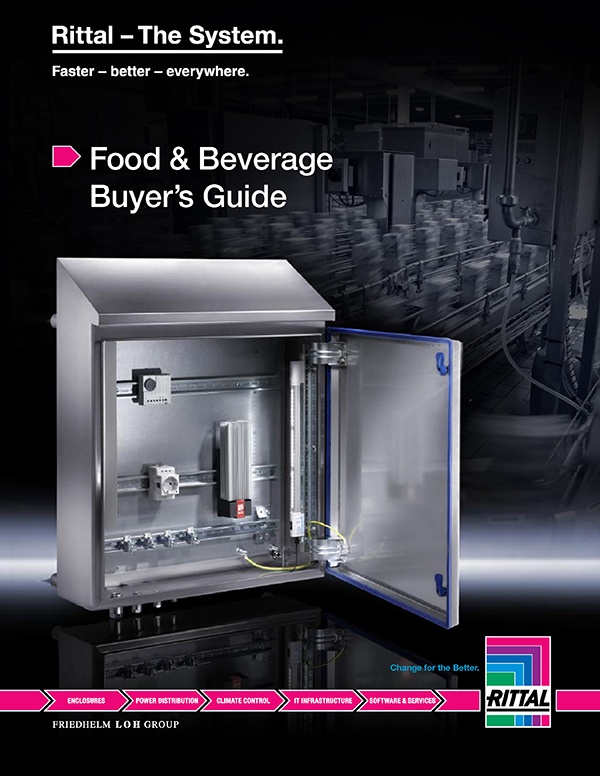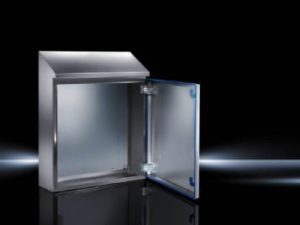
In food and beverage (F&B) production facilities around the world, cleaning and sanitization are just as vital to an organization’s success as the taste and texture of the products they produce. Although cleaning adds no direct value to a product, the cost of failing to do it properly can be enormous, both in terms of company reputation and the risk of spreading potentially deadly illnesses. Even when working hard to operate in compliance with the strictest standards, U.S. F&B producers are forced to recall thousands of products each year, typically for one of three reasons: undeclared allergens (such as the presence of milk, wheat, peanuts or soy that don’t appear on the label), pathogens like E.coli, salmonella or listeria, or physical contamination.
CLICK HERE TO DOWNLOAD YOUR FOOD & BEVERAGE BUYER’S GUIDE
All U.S. F&B processors are affected by increasingly stringent food safety standards. These standards are contained in the FDA Food Safety Modernization Act (FSMA), the most sweeping reform of U.S. food safety laws in more than 70 years. FSMA affects almost everyone involved in the U.S. food supply chain, from manufacturers to shippers to retailers.
Sanitation design is critical to all F&B processing operations, but especially to those handling dairy, meat and poultry products because cultures and other organisms can easily contaminate other products processed using the same line. Preventing outbreaks of food-borne illnesses demands that processors establish and follow comprehensive cleaning and sanitation protocols and schedules. However, although cleaning is crucial, it tends to be extremely time consuming. It has been estimated that, on average, 20 percent of a F&B plant’s day is spent cleaning equipment.1
Every surface in a processing line requires regular decontamination, even those that might seem unlikely to come into direct contact with product, such as wallmount housings and free-standing enclosures that protect the line’s mechanical and electrical control equipment. In order to withstand the harsh cleaning chemicals, high-pressure hot water and steam often required for disinfection, a growing number of mechanical engineers and plant operators are specifying stainless steel housings and enclosures for their facilities, such as Rittal’s Hygienic Design (HD) stainless steel enclosures, which are designed to prevent corrosion from frequent wash-downs and allow for shorter cleaning times while using less water and fewer chemicals.
Solving the Disinfection Dilemma
The most productive enclosure designs for the food and beverage industry allow for thorough disinfection without requiring extended scrubbing or expensive chemicals. Here are some important features to look for when choosing stainless steel housings and enclosures:
- No gaps between the enclosure and its door or cover. For example, a continuous silicone seal door gaskets will help prevent the intrusion of water, steam or contaminants and can be easily replaced when worn.
- A smooth surface grain that eliminates tiny pores that could harbor micro-organisms.
- Internal hinges mounted inside the sealed zone to simplify cleaning.
- An integrated, non-detachable rear panel to guarantee reliable hygiene and sealing in an area that is difficult to monitor.
- Side panels that are screw-fastened from the inside to eliminate threads or other crevices that could harbor dirt or bacteria.
- Hexagonal screw fasteners without the head slots that could allow debris to collect and with external seals to keep moisture out of the enclosure.
- Easy-to-clean stainless steel locks and cable glands.
- Sloped tops and sealed access points to prevent water or cleaning agent infiltration that could result in electrical failure, unscheduled downtime and expensive repairs.
- An Ingress Protection (IP) rating that is consistent with the line’s cleaning protocol. Common IP ratings for F&B applications include IP 66 (dust tight and protected from high pressure water jets from any direction), and IP 69K (dust tight and protected from steam-jet cleaning).
To learn more about how hygienically designed enclosures can reduce cleaning and disinfection costs in F&B processing facilities and help prevent the spread of food-borne illnesses, download Rittal’s free Hygienic Design guide.
1 Mike Murdaugh, ,”Food Plant Sanitation: How to Integrate Regular Cleaning Into Your Facility’s Processing“, Food for Thought, November 17, 2016.


.jpg)